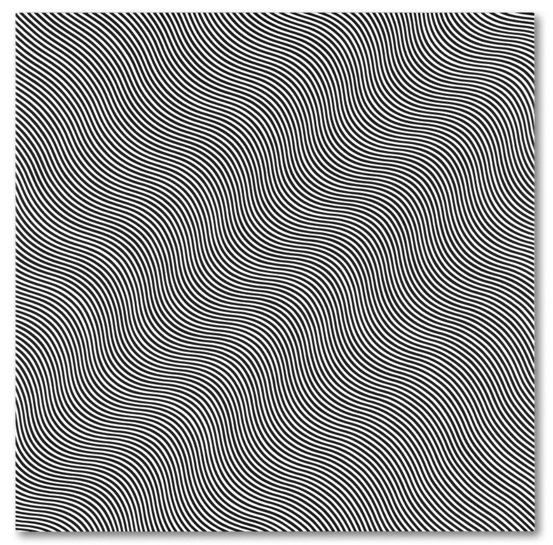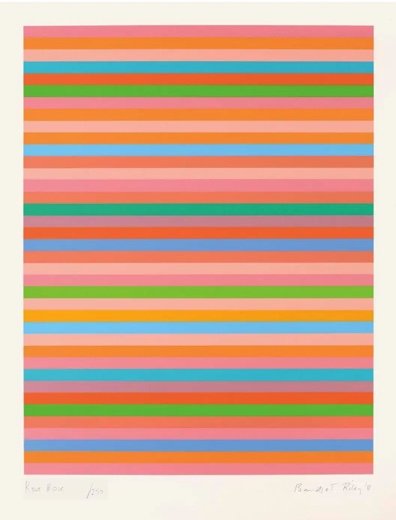Why Riley Really Matters
There aren’t many people who get to be (nearly) the ripe age of 93 and can say they have achieved so much as Bridget Riley. From being one of the major proponents of the ground-breaking Op-art movement in the sixties she went on to become the first woman to represent Britain at the Venice Biennale in 1968. Since then she has continued to working on huge public commissions across the world and has cemented herself as one of the most important, and the most widely collected female artists.
Today, we delve into some of her influential works and their impact on both the art market and beyond.
Bridget Riley (Diagonal Curve) 1966, 51 x 51 inches sold for £3.8 mil in 2016
Believe it or not, this body of work was initially inspired by George Seurat’s pointillist technique and her own version of his “The Bridge at Courbevoie” hung in her studio for many years. By the sixties she has replaced the complementary colours with monochrome lines.
After her black and white OP- Art phase, came her exploration of colour and stripes, it was this time period and this body of work that would become the most highly collectable. The much more vibrant yet remarkedly fixed palette was inspired by her travel to Egypt in 1980-81. On the topic of which Riley remarked how they, “…used the same colours- turquoise, blue, red, yellow, green, black and white for over 3,000 years. In each and every usage these colours appeared different but at the same time they united the appearance of the entire culture.” She painted the works from memory, with each colour resembling a moment or feeling from the ancient town.
Just two years ago, Riley revealed her first ceiling painting at the British School in Rome that was also inspired by the Egyptian palette. Below are some examples highlighting her exceptional work from this time….
In the 2000s, Riley experienced significant milestones in her career, including a retrospective at the Tate Britain in 2003 and a solo exhibition at London's National Gallery. During this period her stripes became looser and the colours took on new forms.
In her third retrospective at London’s Hayward gallery a number of these works were exhibited, confronting the viewer with solid walls of colour that appears to oscillate before them, even in complete stillness. Unsurprisingly her editions from this period are highly collectable, mostly produced in small editions of just 75. Her use of colours and curved forms restricted to their rectangular confines create a calming and refreshing sense of energy. Get in touch to find out what editions are available, or if there is a particular work you are looking for let us know.
For the Olympic Games in 2012, Riley created Rose Rose, she organised colours in horizontal stripes, resembling the layout of athletic tracks or swimming lanes. The way the colours interact creates a dynamic sense of motion, symbolising the energy of sports and the Olympic Games.
Let’s take a minute to look at an emerging artist who has been inspired by her work today, Chris Daniels.
Chris has exhibited at the RA, the Tate and we are so excited to see what is next. His original paintings are priced from just £500, if you like his artwork, connect with us to know more. We would love to hear from you.


























